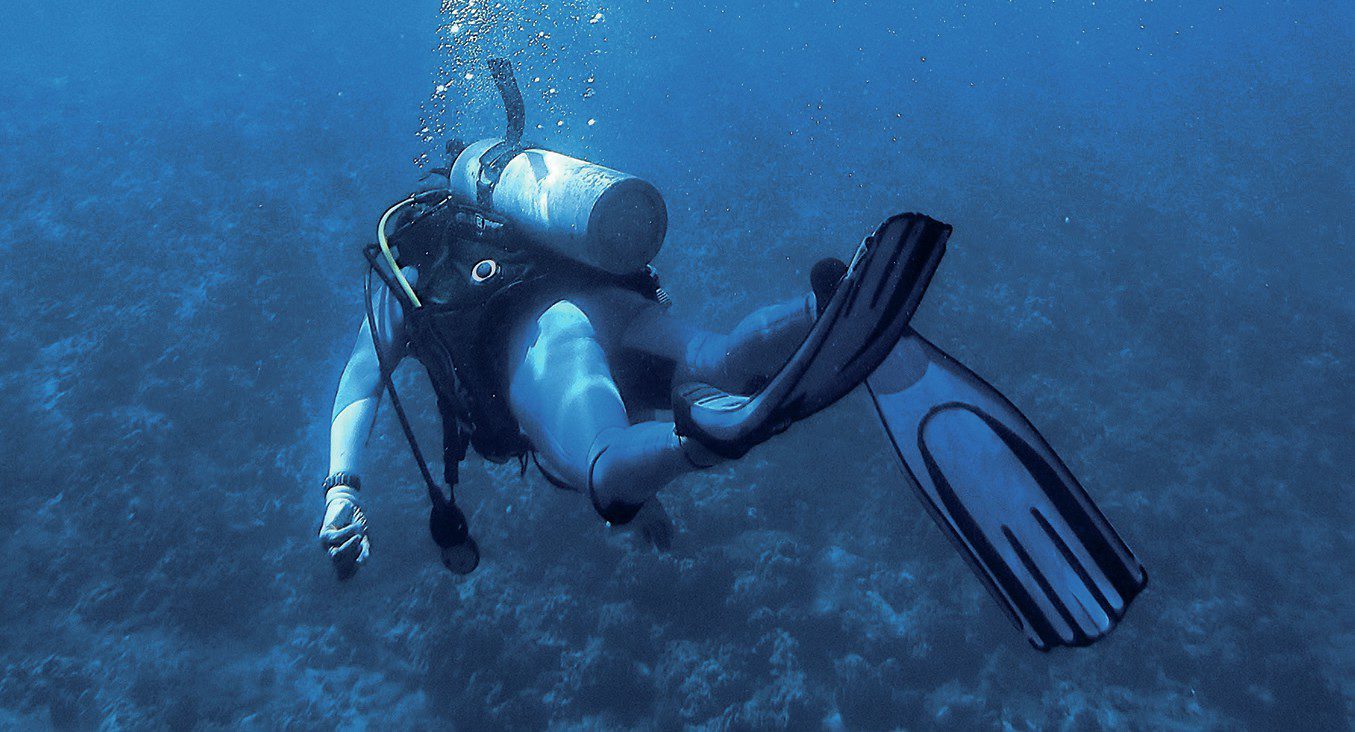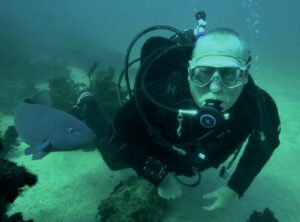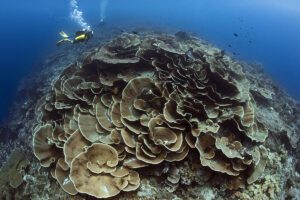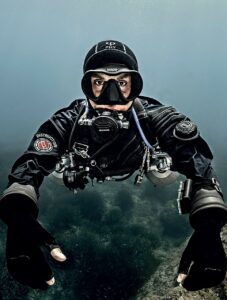Tim Blömeke explains how to calculate your RMV from SPG readings before and after the dive, the cylinder size, and the average depth and dive time logged by your computer.
Respiratory minute volume, or RMV, also referred to as SAC rate (for Surface Air Consumption) or SRC (Surface Consumption Rate) is the volume of breathing gas that passes into and out of a person’s lungs, on average, per minute.
(1) It varies from person to person. Knowing one’s RMV is essential for more advanced dive planning because it enables one to predict how long a given gas supply will last at a given depth. RMV is measured in litres per minute.
Free litres or, how much gas is really in my tank?
We usually indicate the amount of gas in our cylinder in terms of pressure. That’s fine for communication during a dive, but for planning, we need to get a little more detailed. After all, a bigger tank at 200 bar holds more gas than a smaller one, doesn’t it? How about a 15-litre tank at 160 bar compared with an 11-litre tank at 200? Here’s where the concept of free litres comes in.
A free litre is the amount of gas that occupies a volume of one litre at a pressure of one atmosphere (1 ata or 1.013 bar, treated here as equal to 1 bar for practical purposes). In this article, we will use L (capitalised) as the unit symbol for free litres and l (lowercase) for litres in the regular sense.
The neat thing about this unit is that we can use it to describe how much gas is in a scuba cylinder, by multiplying the size of the cylinder with the pressure. For example, when released to the atmosphere (1 ata), the gas in a 10-litre cylinder pumped to a pressure of 200 bar would occupy a volume of 2,000 litres (10 l x 200 bar). In other words, the cylinder contains 2,000 free litres of gas. Now we can answer the question above: 15 l x 160 bar = 2,400 L is more than 11 l x 200 bar = 2,200 L.
We are now also able to quantify the exact amount of gas we use on an individual dive: e.g., if we start a dive at 210 bar, finish it at 60 bar, and are using a 10-litre cylinder, we calculate: gas used = (210 bar – 60 bar) x 10 l = 1,500 L.
Bringing in the computer log
Just knowing how many free litres we used on a dive doesn’t tell us our RMV. As we learned during our initial training, gas use is proportional to the ambient pressure (P =1 ata at 0 m, 2 ata at 10 m, 3 ata at 20 m etc., or P = 1 + depth in metres/10 ata), and of course to dive time. To arrive at our RMV for a given dive, we therefore have to divide the amount of gas used by the dive time (T) and the dive’s average ambient pressure (P), calculated from the average depth found in our computer log.
Our final formula is: RMV (in l/min) = gas used / (Pressure * Time)
Example: Let’s say you did a 45-minute dive. Your cylinder has a volume of 12 litres, your starting pressure was 200 bar, and you finished at 60. Your computer log tells you that the average depth for the dive was 12m. Your RMV is (12 l * 140 bar) / (2.2 ata * 45 min) = 17 l/min.
Note that a diver’s RMV is an average value that will vary somewhat depending on circumstances (e.g., workload, stress, thermal comfort). It also tends to decrease with experience and increase when a diver hasn’t been in the water for a while. RMV calculations should therefore be performed on a regular basis.
For safety, any fractions should be rounded conservatively, i.e. treat 13.4 l/min as 14 l/min.
Using RMV in dive planning
Once you know your RMV, you can reverse the process above to predict how much gas you will use on a dive you are planning. For example, if your RMV is 16 l/min and you want to spend 25 minutes at 25m, you can expect to use 16 l/min * 25 min * 3.5 ata = 1,400 L of gas for that segment of the dive. In a standard AL80 aluminium cylinder (11 litre volume), that would be 1,400 L / 11 l = 127 bar, rounded up to 130 bar.
About the author
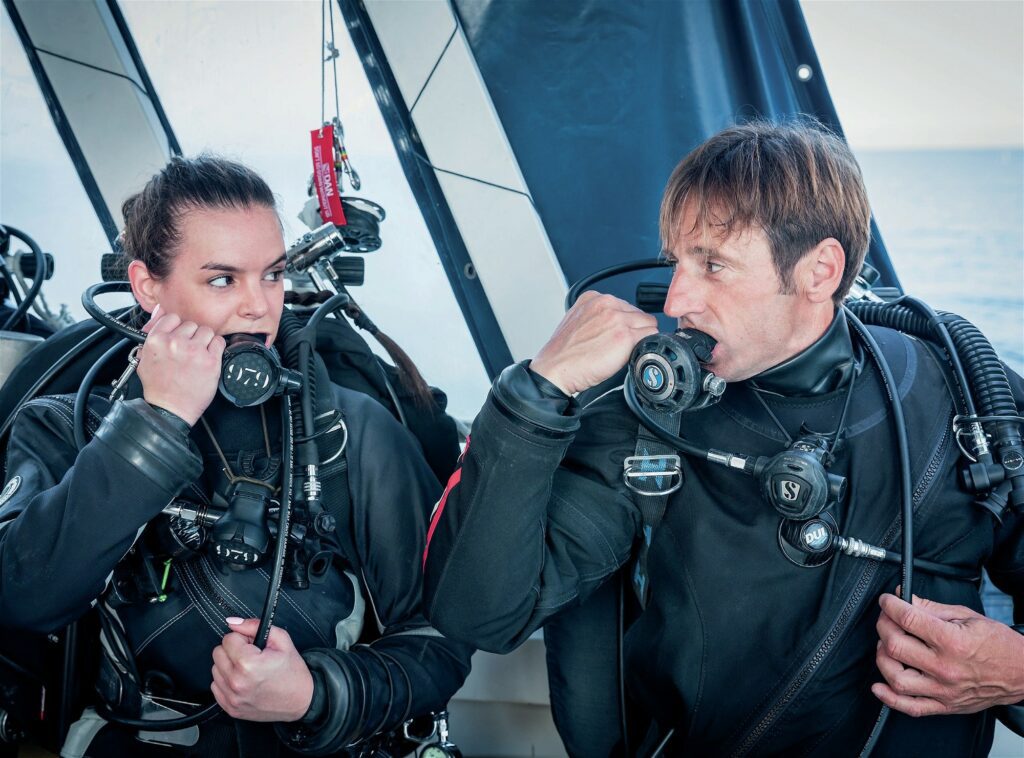
Tim Blömeke teaches technical and recreational diving in Taiwan and the Philippines. He is also a freelance writer and translator, as well as a member of the editorial team of Alert Diver. For questions, comments, and inquiries, you can contact him via his blog page or on Instagram.
Since dive planning usually happens in a team, a team should use the highest RMV among its members as the basis for planning.
Final note: Don’t be that person
Different people have different gas consumptions, and using a lot of gas can be a touchy subject for some. Having a low RMV is nice, but please don’t think that makes you a better diver – a diver’s RMV depends on a variety of physiological and environmental factors.
Yes, RMV needs to be discussed during dive planning, but in a strictly factual manner. Don’t judge. Most importantly, don’t brag. Like with certain body parts, even if you’re very proud of yours, that doesn’t mean everybody wants to hear about it.
Happy planning, and stay safe, always!
(1) According to the US Navy Diving Manual, ‘the respiratory minute volume is calculated by multiplying the tidal volume by the respiratory rate’.
DAN Membership
Before taking the plunge make sure your DAN membership is still active. If it isn’t, join DAN or renew your membership at: daneurope Your DAN membership ensures the services of the biggest international network for assisting divers anywhere, during any emergency.
This article was originally published in Scuba Diver UK #71.
Subscribe digitally and read more great stories like this from anywhere in the world in a mobile-friendly format. Link to the article
